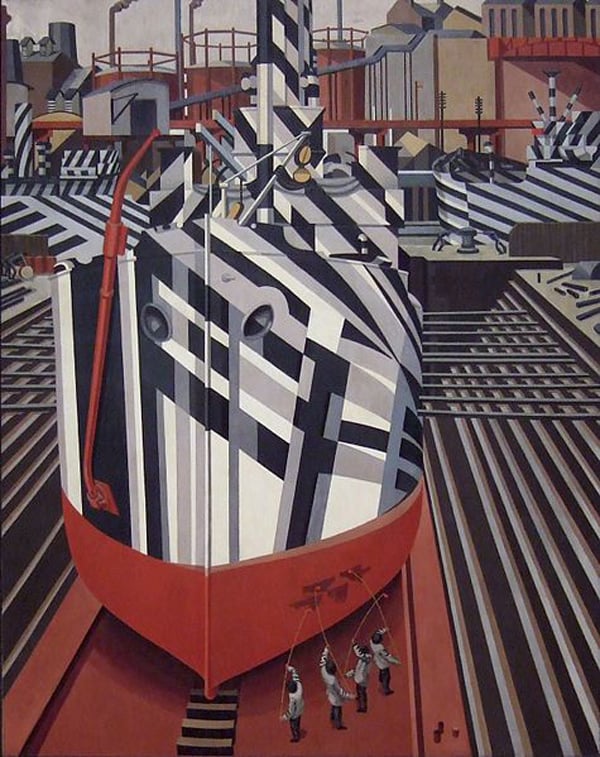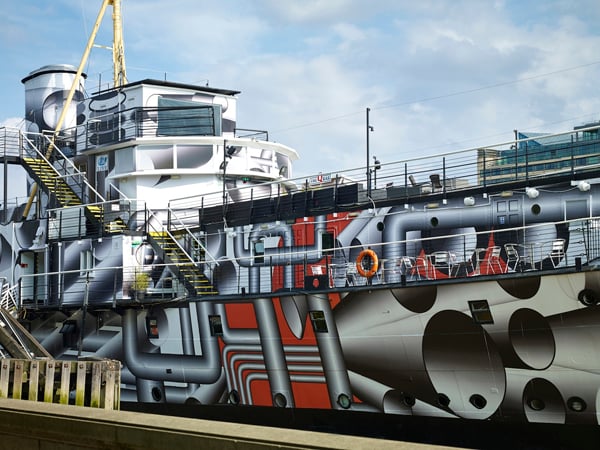Art & Exhibitions
UK Ships Put on Artist-Designed War Paint for World War I Centenary Celebrations
Artists recreate "dazzle camouflage."

Artists recreate "dazzle camouflage."

Artnet News


Tobias Rehberger and Carlos Cruz-Diez have adorned vessels in London and Liverpool with their take on dazzle camouflage, used extensively on British warships during Wolrd War I. Photo: Stephen White
Two war ship will be adorned with artist-designed dazzle paintings to celebrate the centenary of the First World War.
These bright geometric patterns, also known as “dazzle camouflage,” were initially conceived by John Graham Kerr, who introduced them to the then First Lord of the Admiralty Winston Churchill. This was a radical innovation in the art of camouflage: rather than trying to hide, these patterns were optically disturbing the ships’ appearance, making it difficult for enemy submarines to calculate their trajectory. After the war, dazzle camouflage was heavily promoted by marine painter Norman Wilkinson, who is now often credited for their invention.

Edward Wadsworth, Dazzle-ships in Drydock at Liverpool (1919)
Photo: Courtesy National Gallery of Canada
In Liverpool, the Venezuelan artist Carlos Cruz-Diez will create dazzle camouflage for the pilot ship Edmund Gardner, located at the Dry Dock near the Albert Dock. Presented as part of the Liverpool Biennial, the design will be unveiled on June 12, 2014. This will be followed on July 9 by the inauguration of Tobias Rehberger‘s take on the optic camouflage—a longtime favorite motif within his practice—for HMS President, which served as a Dazzle Ship during World War I.